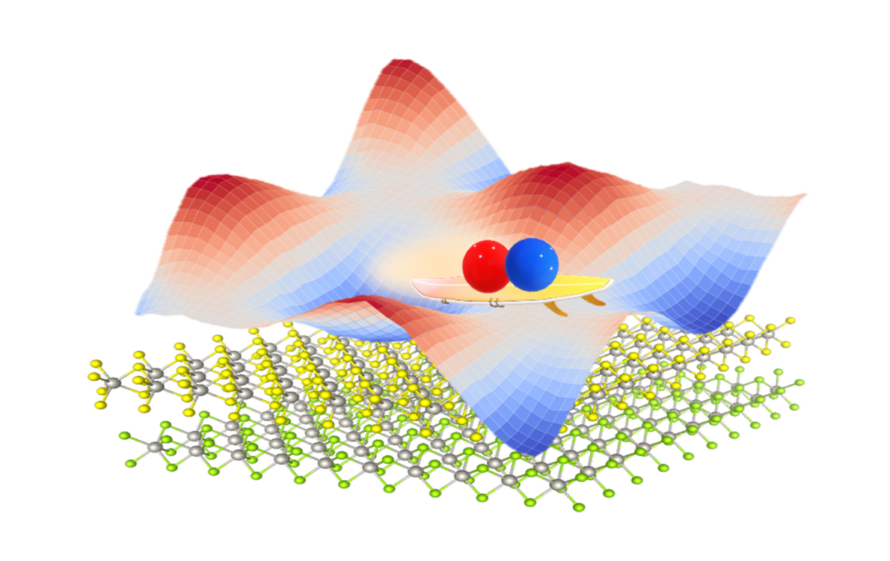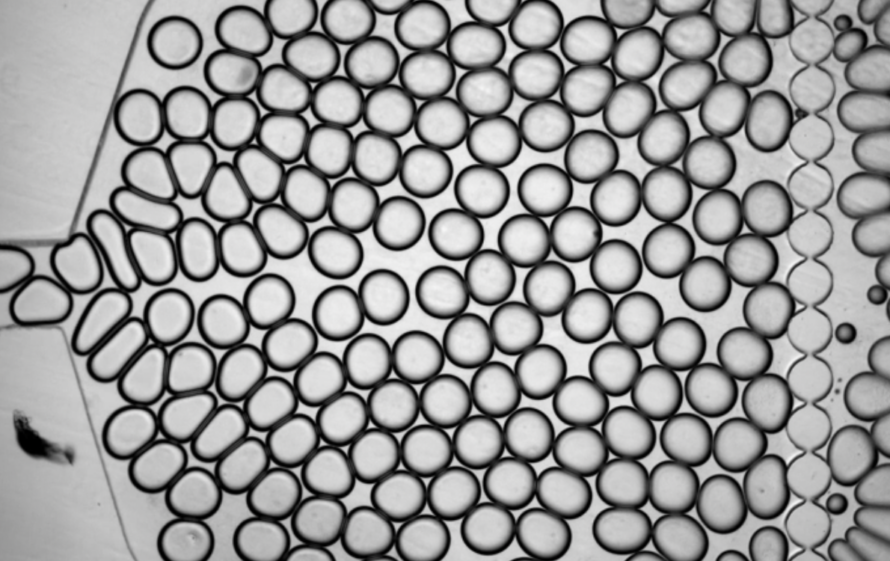Quantum information systems are poised to revolutionize scientific discovery, computing, sensing, communications, and beyond. Quantum computers, for example, could someday perform calculations surpassing the capabilities of today’s classical computers, leading to breakthroughs in chemistry, physics, and materials.
To help achieve this future, Berkeley Lab scientists are partnering with industry and academia and working across the quantum research ecosystem, from theory to applications. Among its many capabilities, Berkeley Lab leads the Quantum Systems Accelerator (QSA), a U.S. Department of Energy National Quantum Information Science Research Center that brings together world-class researchers from 15 partner institutions to catalyze national leadership in quantum information science. Berkeley Lab also leads the Advanced Quantum Testbed (AQT), a collaborative research laboratory and open-access testbed to advance quantum computing based on superconducting circuits.
Here are several achievements that highlight how Berkeley Lab is advancing the quantum frontier.
Accelerating the fabrication of noise-free superconducting qubits
Berkeley Lab scientists developed a new fabrication technique that could improve noise robustness and performance in superconducting qubits, a key step in enabling large-scale quantum computers. Superconducting qubits, like all qubits, are particularly susceptible to errors caused by disturbances such as unwanted electric charges from materials in the device. The new fabrication technique has the potential to significantly lower noise caused by imperfection of the materials – and thereby improve performance. The chemical etching process enables advanced flexibility and control over the design of superconducting circuits with nanosized 3D structures. The approach can be easily incorporated into manufacturing processes for superconducting microchips or components for qubits.
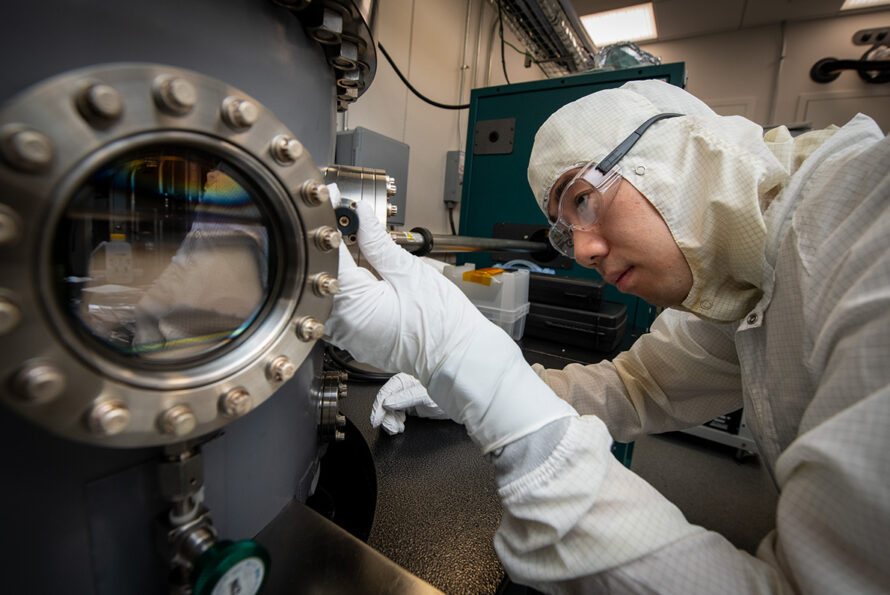
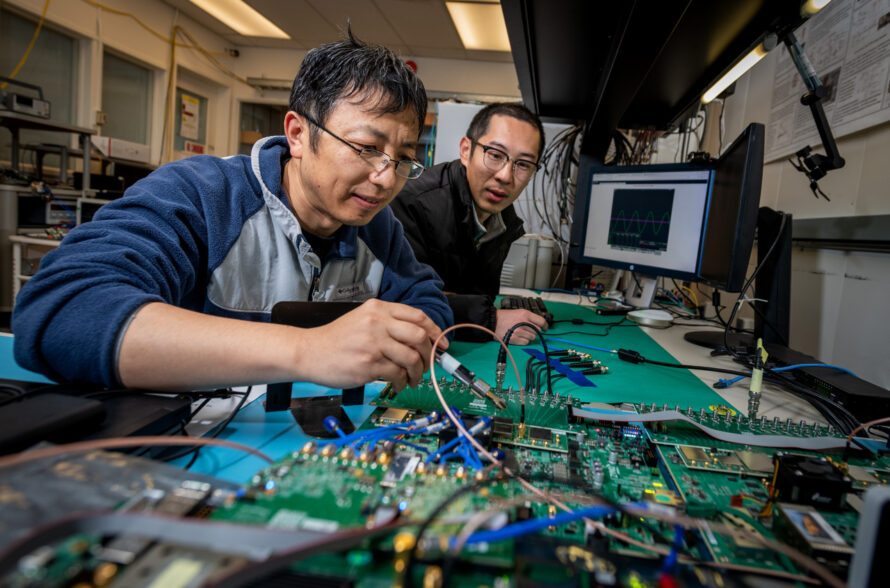
Developing an open-source quantum computer control system
As the number of qubits in a quantum computer grows, the cost, size, and complexity of the computer’s control and measurement hardware also increases. To meet the demand for affordable and modular control systems in quantum computing, Berkeley Lab scientists developed QubiC, a room-temperature control and measurement system designed for superconducting quantum processors. QubiC is open-source, enabling the broader community to use it for their applications and processors. The latest version, QubiCML, integrates AI and machine learning. The system was inspired by Berkeley Lab’s extensive experience developing control systems for particle accelerators.
Testing a quantum computing network
Berkeley Lab leads the Quantum Application Network Testbed for Novel Entanglement Technology (QUANT-NET), a project to build a distributed quantum computing network — a key component of the envisioned quantum internet. Quantum networks will operate fundamentally differently from today’s classical systems and will process and transmit information at unprecedented speeds with enhanced security and processing power. QUANT-NET researchers are building a three-node distributed quantum computing testbed between Berkeley Lab and UC Berkeley. The project has completed its third year and significant progress has been made in the design and implementation of the testbed.

Pioneering quantum materials
Building on decades of leadership in nanoscience, Berkeley Lab has pioneered new approaches to quantum materials, including a breakthrough method that combines high-throughput computation with atomic-scale fabrication to engineer quantum defects for applications in computing, telecommunications, and sensors.
Recently, Berkeley Lab researchers discovered that 2D materials communicate through shared electronic pathways, which has significant implications for future electronic devices. They also created and directly observed highly localized excitons in atomically thin materials, which opens new possibilities for quantum information science applications.
Simulating the subatomic world and beyond
Berkeley Lab is using quantum computers to simulate aspects of particle collisions that are impossible on traditional computers and developing particle simulations using advanced quantum computer algorithms, which will enable a deeper understanding of the subatomic world. Scientists also developed a new approach to error mitigation that could help make quantum computing’s theoretical potential a reality, enabling them to tackle more complex problems such as chemistry simulations with a lot more operations than before.
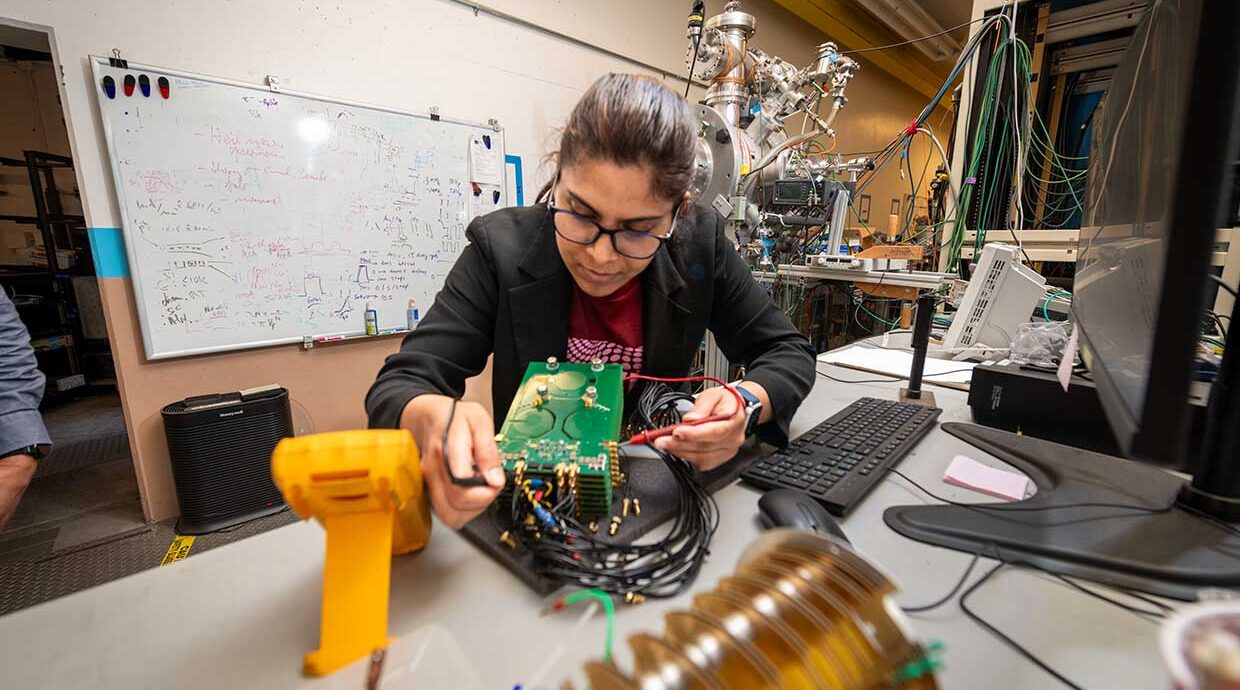
Helping to build quantum computers of the future
Berkeley Lab researchers have developed a new technique that could help build scalable quantum computers of the future. Using a femtosecond laser during experiments that explore the role of hydrogen in qubit formation, the new method programs the formation of telecom-band optical qubits in silicon for large-scale manufacturing. The technique could help overcome challenges in qubit fabrication and quality control by building on current silicon-based computing infrastructure.
Exploring dark matter with quantum sensors
Berkeley Lab is conducting groundbreaking research in quantum sensing, which uses the principles of quantum mechanics to make extremely precise measurements that help researchers explore the properties of subatomic particles. Recently, the TESSERACT collaboration joined the hunt for dark matter using the exquisite sensitivity of superconducting transition-edge sensors. The techniques developed to use these sensors open up new searches for dark matter and have potential applications in quantum computing.
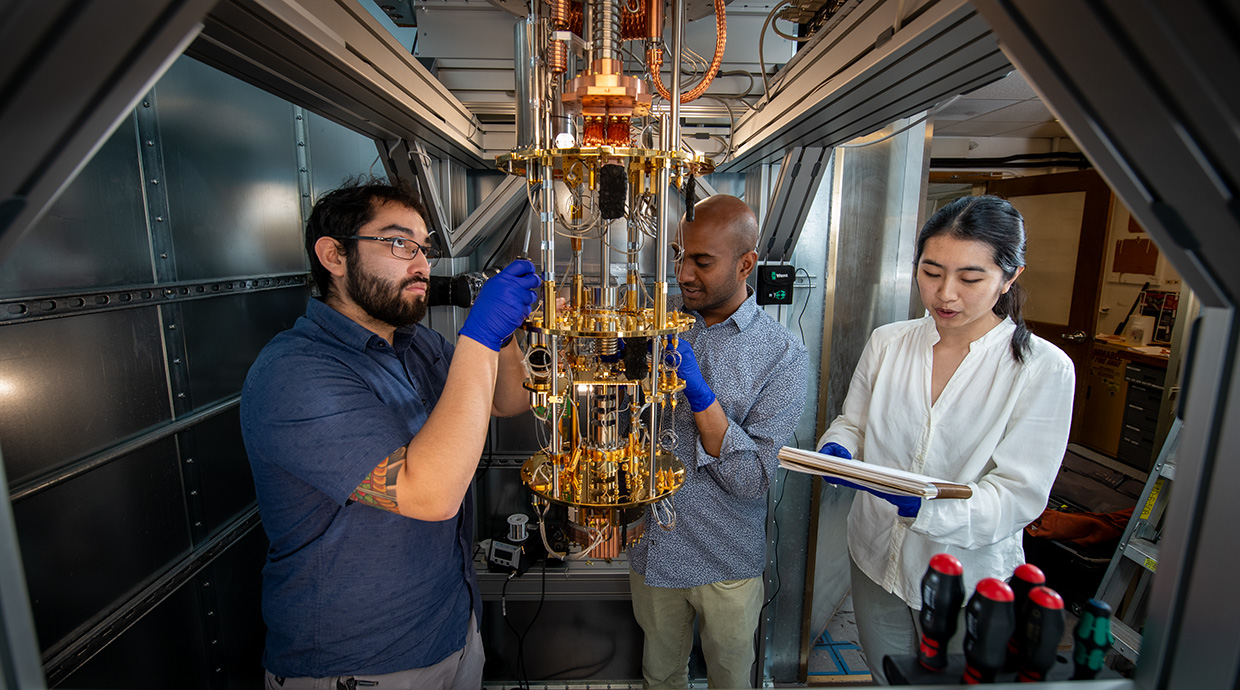
###
Lawrence Berkeley National Laboratory (Berkeley Lab) is committed to groundbreaking research focused on discovery science and solutions for abundant and reliable energy supplies. The lab’s expertise spans materials, chemistry, physics, biology, earth and environmental science, mathematics, and computing. Researchers from around the world rely on the lab’s world-class scientific facilities for their own pioneering research. Founded in 1931 on the belief that the biggest problems are best addressed by teams, Berkeley Lab and its scientists have been recognized with 16 Nobel Prizes. Berkeley Lab is a multiprogram national laboratory managed by the University of California for the U.S. Department of Energy’s Office of Science.
DOE’s Office of Science is the single largest supporter of basic research in the physical sciences in the United States, and is working to address some of the most pressing challenges of our time. For more information, please visit energy.gov/science.

